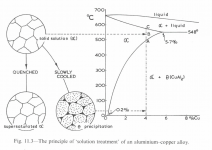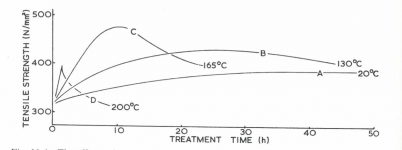The MGTC I'm restoring has a racing history. It was running with an period Laystall-Lucas aluminium head. Damn rare & dated 15/10/1953.
The engine works I took it to for testing took one look at the indentations made by the flat washers under the mounting bolts & declared "It's been cooked & the metal has gone soft". A Brinell (hardness) test proved it. If I used it I'd get repeated head gasket failures.
I've heard rumours of treatments to re-harden aluminium but surely they would have known about them?
Does anyone have insights?
The engine works I took it to for testing took one look at the indentations made by the flat washers under the mounting bolts & declared "It's been cooked & the metal has gone soft". A Brinell (hardness) test proved it. If I used it I'd get repeated head gasket failures.
I've heard rumours of treatments to re-harden aluminium but surely they would have known about them?
Does anyone have insights?


